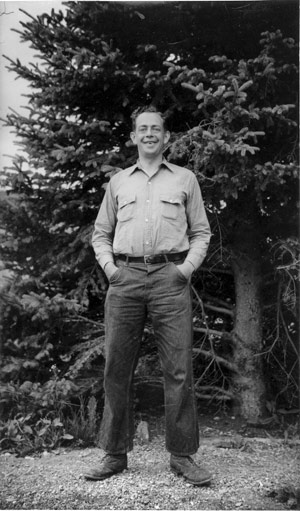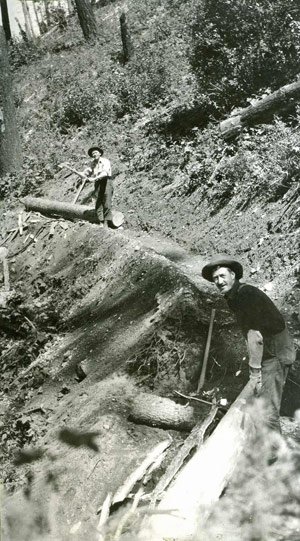In the winter of 1960, Wallace Stegner, dubbed the “Dean of Western Writers,” penned a letter to the federal commission that helped shape the nation’s outdoors policies. The subject of Stegner’s famous letter was the “wilderness idea,” which had grown from a grassroots aspiration of early conservationists into a nationwide movement to preserve sections of public land in their natural state.
“Something will have gone out of us as a people if we ever let the remaining wilderness be destroyed,” Stegner wrote.
The frontier forests helped form the nation’s character and shape its history, he said, and they should be protected from industrialization, such as mining, and other commercial development.
“Americans still have that chance, more than many peoples,” he said.
Four years later, Stegner’s words became the introduction to the Wilderness Act, a watershed policy that, in its own words, would “secure for the American people of present and future generations, the benefits of an enduring resource of wilderness.”
Signed into law by President Lyndon Johnson on Sept. 3, 1964, the legislation set aside 9.1 million acres across 13 states, the largest sections of which were in Montana, California and Wyoming.
Though Stegner and others were at the forefront of championing the cause, their efforts and eventual success were derived from the spirit of Robert Marshall.
Marshall is widely considered the father of the wilderness preservation movement. As a forester and activist who spent time roaming throughout Northwest Montana, Marshall called for Americans “to fight for the freedom of the wilderness.” In 1935, he founded The Wilderness Society, which became the driving force behind the 1964 legislation.
Marshall was never able to witness the milestone event. He suffered an untimely death at the age of 38. Yet his influence lived on.
 |
|
Bob Marshall, pictured, founded The Wilderness Society and inspired the creation of the Wilderness Act. | Courtesy photo |
 |
|
Two trail crew members, |
In 1985, during the 50th anniversary of The Wilderness Society, writer T.H. Watkins stated, “One could comfortably argue that Robert Marshall was personally responsible for the preservation of more wilderness than any individual in history.”
The spotlight still shines bright on Marshall and the historic legislation he inspired.
The Museum at Central School in Kalispell is featuring a new exhibit that pays homage to Marshall and the wilderness complex bearing his name.
The complex encompasses three wilderness sections — the Bob Marshall, the Scapegoat and the Great Bear — that span 1.53 million acres across Northwest Montana. The Bob on its own is one of the largest and oldest wilderness sections, and the overall complex features 1,900 miles of trail.
The museum officially unveiled the exhibit at its opening reception on April 9. It was previously on display in Columbia Falls and will remain in Kalispell until next spring.
The centerpiece of the display is a historic trail camp featuring antique camping gear and tools that were used to build the original wilderness trails. There are also remnants from the oldest surviving phone line in the U.S. The exhibit features several historic photos of crews constructing trails in the “Bob” as early as 1922 before it became one of the first designated wildernesses in 1964. Newer photos show crews from the Bob Marshall Wilderness Foundation working on trail maintenance, weed eradication and historic preservation.
“This exhibit goes a long way toward helping folks understand this vast wilderness that is right here in our backyard,” said Gil Jordan, the museum’s executive director. “Everyone knows about Glacier Park, but the Bob is this spectacular, untrammeled wilderness, and few people really know about it.”
The Kalispell exhibit is getting a jump on upcoming events across the nation that are being organized to celebrate the 50th anniversary of the Wilderness Act.
The Wilderness Institute at the University of Montana and Wilderness50 recently launched a website dedicated to next year’s milestone. The website, www.wilderness50.com, is a growing source of information on upcoming events and projects.
The Flathead National Forest is hosting an informational meeting for the public on the Bob Marshall on April 13 at 10 a.m. at the Hungry Horse Ranger Station. Forest managers and staff will be on hand to discuss the complex and the results of ongoing monitoring projects.